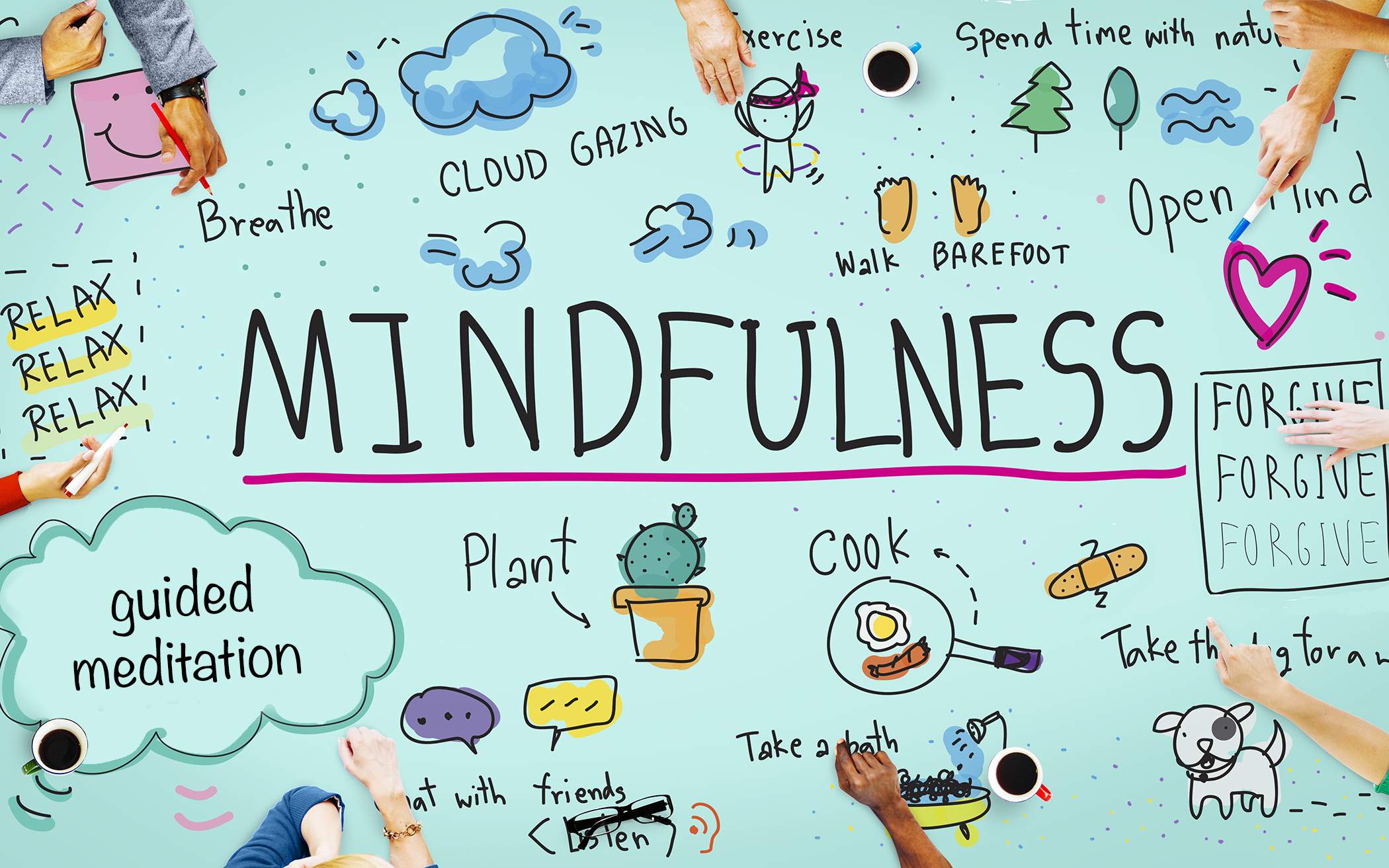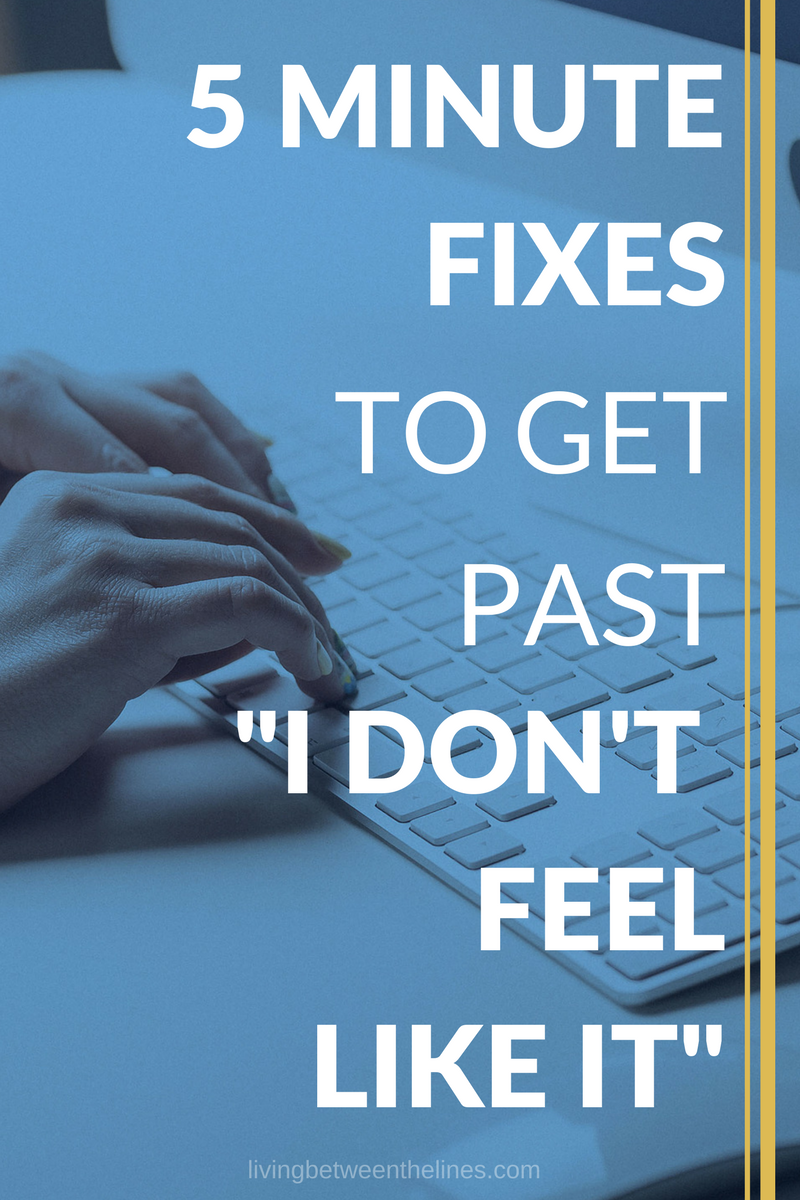What Is Mindful Living? A Practical Introduction

Ever feel like you're just going through the motions, your mind racing a mile a minute while your body is stuck on autopilot? Like life is happeningtoyou instead ofwithyou? You're not alone. Many of us feel disconnected from the present moment, constantly bombarded by distractions and worries.
The modern world often pulls us in a million different directions. We grapple with constant notifications, endless to-do lists, and the pressure to always be on.This can lead to feelings of overwhelm, anxiety, and a sense of disconnect from ourselves and the world around us. It's like trying to navigate a crowded city with a blindfold on, stumbling from one task to the next without truly experiencing anything.
Mindful living is about intentionally paying attention to the present moment without judgment. It's about waking up from autopilot and experiencing life with all your senses. It’s a way of cultivating awareness and appreciation for the here and now, leading to a greater sense of peace, clarity, and well-being.
In this practical introduction, we'll explore the core principles of mindful living, unravel common misconceptions, and provide actionable steps you can take to integrate mindfulness into your daily routine. We'll delve into specific techniques, historical context, potential benefits, and address common questions. From understanding the history of mindfulness to practical exercises you can implement today, get ready to discover the transformative power of presence.
The Essence of Being Present
Being present is the cornerstone of mindful living. It’s about consciously directing your attention to what's happeningright now, rather than dwelling on the past or worrying about the future. For me, this became incredibly clear a few years ago when I was going through a particularly stressful period at work. I found myself constantly replaying past mistakes and projecting future anxieties, barely noticing the world around me. My commute, which used to be a time for reflection, became a breeding ground for worries. My meals were eaten mindlessly in front of the computer, devoid of flavor or enjoyment. I realized I was missing out on my life.
I decided to try a simple mindfulness exercise: focusing on my breath. Initially, it was incredibly difficult. My mind would wander constantly, jumping from one thought to another. But with practice, I began to notice the subtle sensations of each inhale and exhale. The rise and fall of my chest, the cool air entering my nostrils, the gentle release of each breath. By anchoring myself to my breath, I could gently guide my attention back to the present moment whenever my mind started to drift. This simple practice began to spill over into other areas of my life. I started paying more attention to the taste of my food, the warmth of the sun on my skin, the sounds of the city around me. It was like rediscovering the world.
Common Misconceptions About Mindfulness
One common misconception is that mindfulness is about emptying your mind. This isn't true! Our minds are naturally busy, and trying to force them to be blank is like trying to stop the ocean from moving. Mindfulness is about observing your thoughts and feelingswithout judgment. It’s about acknowledging them, letting them pass, and gently redirecting your attention back to the present moment. Another misconception is that mindfulness is only for monks or spiritual gurus. While mindfulness has its roots in ancient traditions, it’s now practiced by people from all walks of life, regardless of their beliefs or backgrounds. It's a practical skill that anyone can learn and benefit from. Furthermore, some believe that mindfulness is a quick fix for all of life's problems. While mindfulness can significantly improve your well-being, it's not a magic bullet. It requires consistent practice and a commitment to self-awareness. It's a journey, not a destination.
The History and Myths Surrounding Mindfulness
The roots of mindfulness can be traced back over 2,500 years to ancient Buddhist traditions. Siddhartha Gautama, the Buddha, emphasized the importance of cultivating awareness through meditation and mindful living. However, mindfulness isn't solely a Buddhist practice. Similar concepts of present-moment awareness can be found in other spiritual traditions and philosophical schools of thought. In recent decades, mindfulness has been secularized and integrated into Western psychology and healthcare. Jon Kabat-Zinn, a molecular biologist, played a key role in introducing mindfulness-based stress reduction (MBSR) to the Western world in the 1970s.
A common myth is that mindfulness is about escaping reality. In fact, it is about engaging with reality more fully and authentically. It's not about ignoring your problems or avoiding difficult emotions, but about approaching them with greater clarity and compassion. Another myth is that mindfulness is passive or inactive. On the contrary, mindfulness requires active effort and intention. It's about consciously choosing to pay attention to the present moment and cultivating a sense of awareness in your daily life.
Unveiling the Hidden Secrets of Mindful Living
The hidden secret of mindful living isn't some grand revelation, but rather a collection of small, consistent practices that, over time, transform your relationship with yourself and the world. It's about recognizing that you have the power to choose where you direct your attention. It's about cultivating a sense of curiosity and openness towards your own experience. One often-overlooked aspect of mindful living is the importance of self-compassion. It's easy to be critical of ourselves, especially when we're struggling. But mindfulness encourages us to treat ourselves with the same kindness and understanding that we would offer to a friend. This involves recognizing our common humanity, acknowledging our imperfections, and offering ourselves words of encouragement and support. Another hidden secret is the power of mindful movement. Engaging in activities like yoga, tai chi, or even just a mindful walk can help you connect with your body and release tension. By paying attention to the sensations of movement, you can anchor yourself to the present moment and quiet the mental chatter.
Recommendations for Embracing Mindful Living
If you're interested in embracing mindful living, start small and be patient with yourself. Don't try to overhaul your entire life overnight. Instead, focus on incorporating a few simple practices into your daily routine. One recommendation is to start a daily mindfulness meditation practice. Even just five minutes a day can make a difference. There are many guided meditation apps and online resources available to help you get started. Another recommendation is to practice mindful breathing throughout the day. Whenever you feel stressed or overwhelmed, take a few deep breaths and focus on the sensation of the air entering and leaving your body.
Consider incorporating mindful movement into your routine. A simple yoga sequence or a walk in nature can be incredibly grounding.
Find moments of stillness in your day. Turn off your phone, put away your computer, and simply be present with yourself. Read books on mindfulness and explore the topic more deeply. There are countless resources available to help you learn more about mindfulness and its benefits. Most importantly, be kind to yourself. Mindfulness is a journey, not a destination. There will be days when you struggle, and that's okay. Just keep practicing and be patient with yourself.
Specific Mindfulness Techniques
One powerful technique is the body scan meditation. This involves systematically bringing your attention to different parts of your body, noticing any sensations without judgment. This can help you become more aware of physical tension and release it. Another effective technique is mindful eating. This involves paying attention to the taste, texture, and aroma of your food, savoring each bite, and eating slowly and deliberately. Mindful eating can help you develop a healthier relationship with food and prevent overeating.
Mindful listening is another valuable skill. This involves giving your full attention to the person who is speaking, without interrupting or formulating your response. Mindful listening can improve your communication skills and deepen your relationships.
Loving-kindness meditation is a practice that involves cultivating feelings of compassion and kindness towards yourself and others. This can help you develop a more positive and empathetic outlook on life. Each of these techniques offers a unique pathway to cultivating present moment awareness and integrating mindfulness into your daily life.
Practical Tips for Integrating Mindfulness Into Your Daily Life
Start your day with a mindful activity. This could be a few minutes of meditation, mindful breathing, or simply enjoying a cup of tea in silence. Set intentions for the day. Before you start your work, take a moment to visualize how you want to approach the day. What qualities do you want to embody?
Practice mindful communication. When you're talking to someone, give them your full attention and listen without interrupting. Take mindful breaks throughout the day. Get up from your desk, stretch, and take a few deep breaths. These short breaks can help you refresh your mind and reduce stress.
Use technology mindfully. Turn off notifications and avoid multitasking. Be present with what you're doing and avoid getting sucked into social media. Practice gratitude. Take a few moments each day to appreciate the good things in your life.
Reflect on your experiences. At the end of the day, take some time to journal or reflect on your experiences. What did you learn? What did you appreciate? These practical tips can help you integrate mindfulness into your daily life in a meaningful way.
Common Obstacles and How to Overcome Them
One common obstacle is a busy schedule. It can be challenging to find time for mindfulness practice when you're already feeling overwhelmed. Start small and be realistic about what you can commit to. Even just five minutes a day can make a difference. Another obstacle is a wandering mind. It's natural for your mind to wander during mindfulness practice. When this happens, gently redirect your attention back to the present moment without judgment. Don't get discouraged if your mind wanders frequently. This is a normal part of the process.
Another obstacle is impatience. It can take time to see the benefits of mindfulness practice. Be patient with yourself and don't expect overnight results. Consistency is key. A lack of support can also be an obstacle. Find a community of like-minded individuals who can support you on your mindfulness journey. Join a meditation group, attend a mindfulness workshop, or find an online forum. Overcoming these obstacles requires self-compassion, persistence, and a willingness to experiment and adapt your approach as needed.
Fun Facts About Mindfulness
Did you know that practicing mindfulness can actually change your brain? Studies have shown that mindfulness meditation can increase gray matter in areas of the brain associated with attention, emotion regulation, and self-awareness. Mindfulness has been shown to improve sleep quality. By quieting the mind and reducing stress, mindfulness can help you fall asleep more easily and sleep more soundly. Mindfulness can boost your immune system. Studies have shown that mindfulness meditation can increase the production of antibodies and reduce inflammation.
Mindfulness can improve your relationships. By cultivating empathy and compassion, mindfulness can help you connect with others on a deeper level. Mindfulness can increase your creativity. By quieting the mind and opening yourself to new experiences, mindfulness can help you access your creative potential. Mindfulness is being integrated into schools, workplaces, and even prisons. These fun facts highlight the wide-ranging benefits of mindfulness and its growing popularity in various settings.
How to Cultivate a Mindful Environment
Creating a mindful environment starts with decluttering your physical space. A cluttered environment can lead to a cluttered mind. Take some time to declutter your home and workspace, creating a more calming and organized atmosphere. Bring nature indoors. Plants can have a calming and restorative effect. Add some greenery to your home or office to create a more peaceful environment. Incorporate natural light. Natural light can boost your mood and improve your focus. Open your windows, use sheer curtains, and position your desk near a window.
Create a designated meditation space. This could be a quiet corner of your home where you can sit comfortably and practice mindfulness. Decorate it with calming colors, soft textures, and inspiring objects. Use aromatherapy. Certain essential oils, such as lavender and chamomile, can promote relaxation and reduce stress. Diffuse essential oils in your home or office to create a more mindful atmosphere. Practice mindful technology use. Set boundaries around your technology use and create tech-free zones in your home. These simple steps can transform your environment into a sanctuary of peace and tranquility, fostering a greater sense of mindfulness in your daily life.
What If Mindfulness Isn't Working for You?
It's important to remember that mindfulness isn't a one-size-fits-all solution. If you're struggling with mindfulness practice, it's okay to adjust your approach or explore other options. Consider trying different types of mindfulness meditation. There are many different approaches to mindfulness meditation, such as breath awareness, body scan, loving-kindness, and walking meditation. Experiment with different techniques to find what resonates with you. Seek guidance from a qualified mindfulness teacher. A teacher can provide personalized support and guidance to help you overcome challenges and deepen your practice. Explore alternative therapies. If mindfulness isn't working for you, consider exploring other therapies, such as cognitive behavioral therapy (CBT) or acceptance and commitment therapy (ACT). These therapies incorporate mindfulness principles but may offer a different approach that's more suitable for your needs.
Be patient and persistent. It can take time to see the benefits of mindfulness practice. Don't give up if you don't see results immediately. Be open to adapting your approach. Mindfulness is a journey, not a destination. Be open to adapting your approach as you learn and grow. Ultimately, the goal is to find what works best for you in cultivating present moment awareness and improving your well-being.
List of Resources for Mindful Living
Here's a list of resources to help you on your mindful living journey:
Mindfulness Apps: Headspace, Calm, Insight Timer. These apps offer guided meditations, mindfulness exercises, and sleep stories. Mindfulness Books: "Wherever You Go, There You Are" by Jon Kabat-Zinn, "Mindfulness for Beginners" by Jon Kabat-Zinn, "The Power of Now" by Eckhart Tolle. These books provide a comprehensive introduction to mindfulness and offer practical guidance for integrating it into your life. Mindfulness Websites: Mindful.org, UCLA Mindful Awareness Research Center, Center for Mindfulness at the University of Massachusetts Medical School. These websites offer articles, videos, and resources on mindfulness. Mindfulness Podcasts: The Mindful Podcast, Tara Brach Podcast, 10% Happier with Dan Harris. These podcasts feature interviews with mindfulness experts, guided meditations, and practical tips for mindful living.
Mindfulness Workshops and Retreats: Search online for mindfulness workshops and retreats in your area. These events offer an opportunity to deepen your practice and connect with other like-minded individuals. These resources can provide you with the knowledge, tools, and support you need to embark on a fulfilling and meaningful mindful living journey.
Question and Answer About What Is Mindful Living? A Practical Introduction
Q: Is mindful living the same as meditation?
A: While meditation is a core component of mindful living, it's not the only aspect. Mindful living encompasses a broader approach to life, integrating mindfulness into all your daily activities.
Q: Can anyone practice mindful living?
A: Absolutely! Mindful living is accessible to everyone, regardless of age, background, or experience. It's a skill that can be learned and cultivated through consistent practice.
Q: How long does it take to see the benefits of mindful living?
A: While some people may experience immediate benefits, it typically takes time and consistent practice to see significant changes. Be patient with yourself and focus on the process, rather than the outcome.
Q: What if I have trouble staying focused during mindfulness practice?
A: It's normal for your mind to wander during mindfulness practice. When this happens, gently redirect your attention back to the present moment without judgment. With practice, you'll become better at staying focused.
Conclusion of What Is Mindful Living? A Practical Introduction
Mindful living is a journey of self-discovery, a path towards greater awareness, and a powerful tool for cultivating a more fulfilling and meaningful life. By embracing the principles of present-moment awareness, non-judgment, and self-compassion, you can transform your relationship with yourself and the world around you. It's not about escaping reality, but about engaging with it more fully and authentically. It's about finding peace and clarity amidst the chaos of modern life. So, take a deep breath, step into the present moment, and begin your mindful living journey today.


